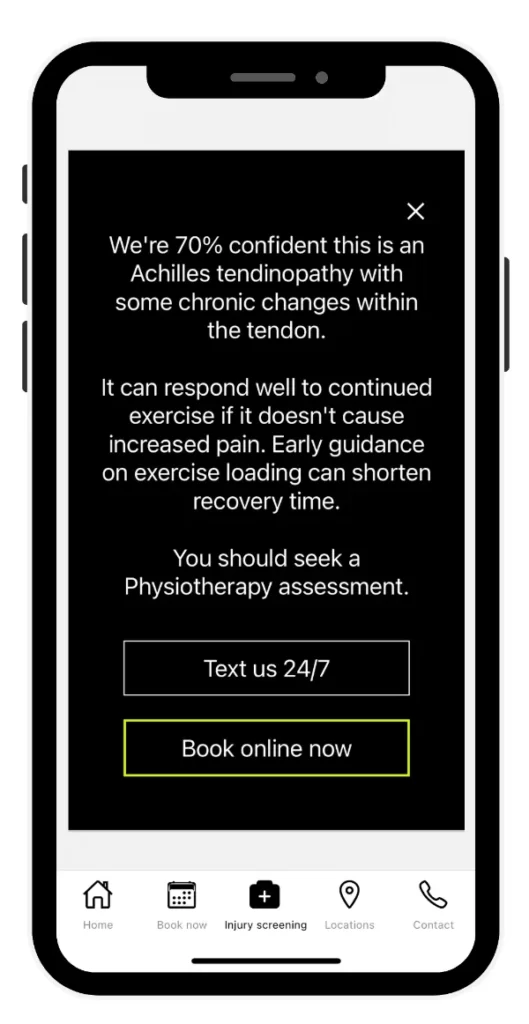“Did my shoes cause this injury?” – it’s one of the most common questions our Physio team get from runners who feel like they might have been a month or two late in replacing their shoes.
So can shoes that are too worn or too old actually end up causing an injury?
This really depends on what your shoes are doing for you. That might sound like a weird idea but different runners will need different features from their shoes.

Need a diagnosis today?
Did you know that Bioathletic has developed a custom app?
- It thinks like a Physio
- It gives you an instant provisional diagnosis and advice
- It’s completely FREE!
It’s available now in Apple app store and Google Play store
Different types of shoes
Some runners will rely on the support that their shoe provides in order to maintain good biomechanical stability. Other runners will get more out of the cushioning and the shock absorbing that it offers. Then there’s the last group of runners who don’t really need anything special from their shoes and could run just as well in a pair of Ugg boots.
Shoes with support
Let’s look at the first category of runners, those who rely on support from their shoes. As the shoe becomes more worn and the support diminishes, the muscles in the leg will need to work harder to provide support and stability during a run. If the muscles can compensate effectively, then your worn shoes won’t be a problem.
But as the shoes wear further or if the muscles become fatigued during a run, the pressure is then placed back on the joints and soft tissue which can cause injury. These injuries include Plantarfasciitis, shin pain, medial knee pain and ITB issues.

Cushioned shoes
For the group of runners that rely on the shoe’s cushioning to absorb force as they impact the ground, the gradual reduction in midsole cushioning will mean that the leg muscles will need to work harder throughout the run. It also means that the knee joints will have to bend further on landing, particularly when running downhill.
The reduction in cushioning and extra muscle work needed will only cause an injury if the muscles fatigue to a point where they are no longer able to effectively shock absorb. This can cause injuries like patellofemoral pain, quads muscle strains and heel pain.
“The rest”
The last group of runners don’t rely on either support or cushioning from their shoes. Their biomechanics allow them to control the movement of the leg without needing any external help. These are the runners who can seemingly choose any shoe and wear them for 2000kms+ without even a niggle. Lucky buggers!
How do you know if your shoes are at fault?
If you’ve got some niggles creeping in or you’ve got an injury, there are a few points to tick off before you go out and buy new shoes.
- Does the injury only affect one side?
If you’re getting pain in your left Achilles but your right one is fine, it’s unlikely that your shoes are solely to blame. If it was due to worn shoes, you’d expect the injury to affect both sides as both legs are exposed to the same overload. - Do your shoes feel dead?
If they feel like they’re past their use by date, then it’s probably time to get a new pair. It means that you’re no longer getting that cushioning or supportive feel. Note that we didn’t say do they *look* dead because some shoes can look tatty and grubby but the key features are still effective. - Are you feeling new aches and pains towards the end of a long run?
If that’s the case, there’s every chance that the shoes aren’t doing their job and that you’re getting soreness once the muscles can no longer compensate. Keep in mind, we’re referring to *new* aches and pains rather than the usual long run suffering.
If you suspect that a fresh pair of shoes is what you need, take your old pair with you to a specialist running shop. Based on how the existing pair have worn over time, your helpful shoe consultant will be able to figure out where the shoe needs to be better and can offer recommendations for shoes that have what you need and will last longer.
Written by
Pete Colagiuri
Sports Physiotherapist
Pete has over 20 years experience as a Physiotherapist and specialises in running biomechanics and complex injuries. He believes that you must identify and fix the underlying cause of an injury, to recover faster, prevent recurrences and improve performance.




